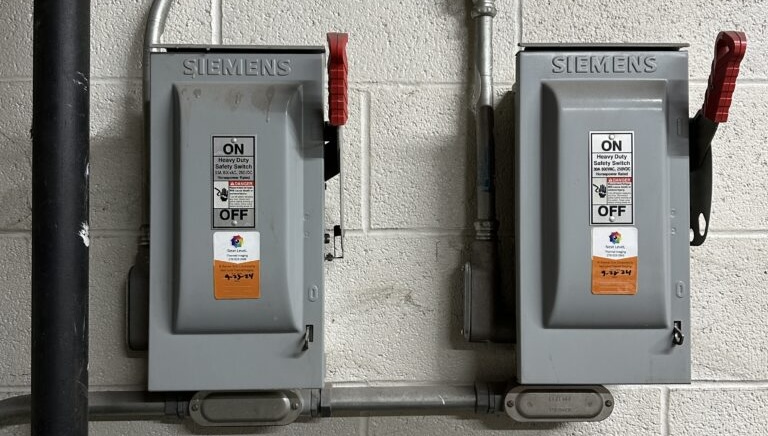Facility managers, maintenance directors, and operations leaders know that the invisible risks lurking behind walls and inside electrical cabinets can be the most costly. Yet, with so many types of thermal imaging services available, it’s easy to misunderstand the unique value each offers. If you’ve ever wondered what truly separates an electrical scan from a mechanical or building investigation scan—and when to deploy each—this guide brings clarity and empowers proactive decisions.
The Three Pillars of Thermal Imaging: Your First Line of Defense
Professional thermal imaging isn’t a one-size-fits-all technology. The most effective preventive maintenance plans leverage three distinct types of scans:
1. Electrical Thermal Imaging Scans
Purpose: Detect hotspots, loose connections, overloaded circuits, and potential fire hazards in electrical systems.
- What it catches: Failing breakers, overheated wiring, panel defects, transformer issues.
- When to use: Routinely (at least annually for compliance with NFPA 70B), especially before insurance audits or after equipment upgrades.
- ROI Example: In a manufacturing plant, a single undetected electrical hotspot can escalate into a catastrophic failure, halting production and costing tens of thousands in downtime and repairs. With regular electrical scans, these hotspots are identified and addressed early, often for a fraction of the cost.
2. Mechanical Thermal Imaging Scans
Purpose: Identify abnormal heat signatures in moving and rotating equipment—signs of friction, misalignment, lubrication loss, or imminent part failure.
- What it catches: Overheating motors, failing bearings, pump problems, misaligned drive systems.
- When to use: As part of predictive maintenance schedules for high-value assets like HVAC units, conveyors, and industrial machinery.
- ROI Example: Louisville Infrared Thermal Imaging identified a minor temperature rise in a client’s conveyor motor, which, left unresolved, would have led to a sudden breakdown. A simple bearing replacement, guided by thermal data, prevented a multi-day shutdown and preserved millions in throughput.
3. Building Envelope & Thermal Investigation Scans
Purpose: Uncover energy losses, hidden moisture intrusion, and insulation gaps throughout the building envelope.
- What it catches: Roof and wall leaks, insulation deficiencies, air infiltration/exfiltration, trapped moisture (risking mold and structural damage).
- When to use: During seasonal transitions, after severe weather, or prior to renovations and energy efficiency upgrades.
- ROI Example: A large commercial property reduced its annual energy spend by over 15% after a building scan pinpointed insulation failures in the attic and thermal bridges around window frames. The fix paid for itself within the first year.
How Each Scan Fits Into Your Risk Management Strategy
While all three scan types use similar non-destructive infrared technology, each brings unique insight:
- Electrical scans safeguard against catastrophic failures and fire risks.
- Mechanical scans extend equipment life by transforming reactive fixes into scheduled interventions.
- Building scans drive energy efficiency, indoor air quality, and capital asset protection through early detection of moisture and heat loss.
Integrating all three pillars creates a comprehensive view of facility health—maximizing ROI, meeting regulatory standards (like NFPA 70B and OSHA), and minimizing downtime.
Demystifying Compliance: The NFPA 70B Connection
New electrical maintenance requirements under NFPA 70B make annual or more frequent thermal imaging a regulatory necessity for many facilities. Insurers increasingly require documented scans for underwriting, and OSHA inspectors may cite unaddressed hazards found via thermal imaging.
Thorough, professionally documented scans—like those provided by Louisville Infrared Thermal Imaging—demonstrate proactive risk management and can help reduce insurance premiums.
Why Choose Louisville Infrared Thermal Imaging?
Not all providers deliver the same level of insight:
– Expertise: Led by certified thermographer Jack McNear, our team brings decades of experience across industrial, commercial, healthcare, and government facilities.
– Technology: We invest in high-resolution cameras and advanced analytics for unparalleled clarity and diagnostic accuracy.
– Actionable Reporting: Beyond the scan, our detailed reports prioritize findings, recommend solutions, and support compliance documentation.
– Non-Disruptive: All scans are conducted while systems remain operational—no downtime required.
Next Steps: Transforming Invisible Threats Into Visible Solutions
Don’t let unseen risks undermine your facility’s safety, compliance, or bottom line. Whether you’re prepping for an audit, planning upgrades, or striving for zero unplanned downtime, understanding the three pillars of thermal imaging is your first step.
Ready to see the invisible? Contact Louisville Infrared Thermal Imaging today to schedule a complimentary assessment or discuss which scan is best for your facility. Prevent tomorrow’s crises today—with precision diagnostics that deliver measurable ROI.

